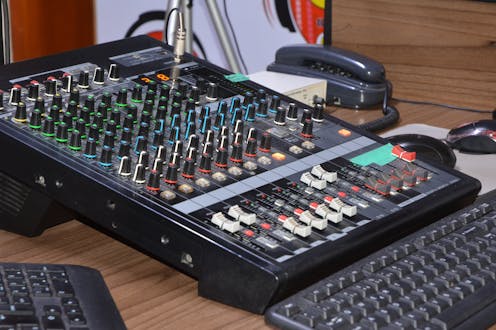The government is spending millions on news, but crucial community media remains underfunded
- Written by The Conversation

The Australian government has launched its News Media Assistance Program, throwing a lifeline to public interest journalism and local news.
The latest push for a more diverse and sustainable news landscape also saw community broadcasters receive a modest but much-needed boost to their funding.
The announcement, worth $180 million overall, is a welcome pre-Christmas gift for struggling media outlets.
But it largely overlooks the importance of community broadcasting in providing accessible, community-engaged news. The program falls short of meaningfully helping the chronically underfunded part of the media landscape.
Millions on the table
On paper (or in government media releases at least), the plan looks promising.
It includes $99.1 million in grants, $33 million for the Australian Associated Press and a commitment of $3 million per year for government advertising in regional newspapers. There’s also $10.5 million for the Australian Communications and Media Authority to implement its Media Diversity Measurement Framework.
This builds on the recently launched News Media Relief Program, which offers $15 million in grants to media outlets to offset journalists’ salaries.
Alongside these announcements was an extra $27 million for the community broadcasting sector. Of this, $15 million is allocated to the Community Broadcasting Program and $12 million to the Indigenous Broadcasting and Media Program.
All up, a substantial investment: $180.5 million to support local news and community broadcasting. But is it enough of a life raft for Australia’s flailing news industry?
Dire times
Australian journalism has been in trouble for years, with a range of factors contributing to the reduced availability and quality of local news.
Australia remains among the worst countries in the world for concentration of media ownership.
There has also been a swathe of regional news outlet closures over the past few years, contributing to vast news deserts.
Further, shrinking newsrooms and the relentless demands of producing ever more multi-platform content is placing immense workload pressures on journalists.
That’s not to mention the role of social media and tech companies in directing online traffic away from news websites.
Against this backdrop, it’s unsurprising the government feels the need to step in.
Read more: Local papers are central to our democracy. We must do more to bring them out of crisis
Local news as a lifeline
Yet Australians, especially those who live in regional areas, value accessible local news.
This is something the community broadcasting sector knows well. In fact, the main reason listeners tune in to their favourite community radio station is to hear local news and information.
Community broadcasting is Australia’s third tier of broadcasting. It’s separate from state-run and commercial models. Community radio and television are not-for-profit and run for and by the community.
It’s the quiet achiever of the Australian media. Our largest independent media sector, one in four Australians tune in every week to the more than 500 services across the country.
Community broadcasters provide diverse and accessible news and current affairs. In doing so, they enhance Australia’s news media landscape.
Community broadcasters serve audiences that are overlooked, ignored and silenced in the mainstream media.
Take Water Watch, for example. This program on Broken Hill’s 2DRY FM explores issues affecting local waterways every week. It won a Community Broadcasting Association of Australia award for their reporting on the Menindee fish kills.
The Multilingual News Service broadcasts on multicultural community radio stations across New South Wales and Victoria. The service was set up to address health information gaps during the pandemic and still provides an essential news service to communities in their own languages.
Then there’s the work of Ngaarda Media in the Pilbara. Through in-depth reporting in the community, it broke the story of the First Nations man wrongfully accused by the mainstream media of kidnapping Cleo Smith.
While much of this work flies under the radar of the mainstream news media, it gives voice to a range of Australians. This is especially true for marginalised people, like those with disability, LGBTQIA+ Australians and First Nations communities.
If the government’s plan is to support diverse and accessible public interest journalism, the community broadcasting sector must be meaningfully included.
The next journalistic generation
As well as providing diverse and accessible community news in its own right, community broadcasting is an important training ground for journalists and media workers.
Our research uncovered a range of stories from those who got their foot in the door of the media industry at their local community radio station. The practical and soft skills that these volunteers learn, alongside the extensive professional networks, were instrumental in their career trajectories.
Supporting community radio to further develop this training will safeguard the largely voluntary workforce of the sector. It will also help to future-proof the next generation of media workers.
Community broadcasting adds enormous yet underappreciated value to the broader news media landscape. And it does so on a shoestring budget.
The Community Broadcasting Foundation is the independent administrator of government funding for the sector. It faces annual funding shortfalls averaging $9.5 million, rising to $11 million this financial year.
Hence the prospect of $15 million over an unspecified time period is little cause for celebration.
So despite the nominal funding announcement, there remains a missed opportunity for the government to make a meaningful investment in community broadcasting.
While the news plan may offer a general sense of direction, charting the course towards a more diverse and sustainable media landscape means recognising and adequately funding community broadcasting.







